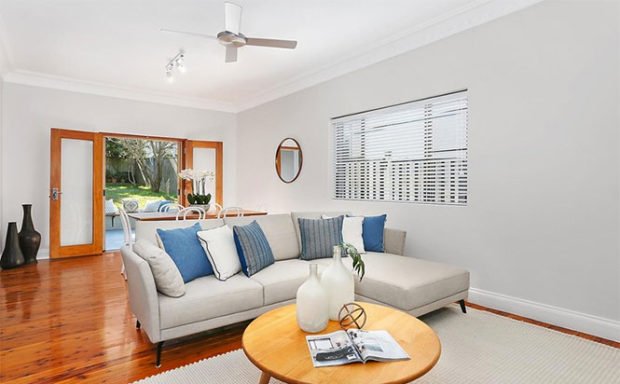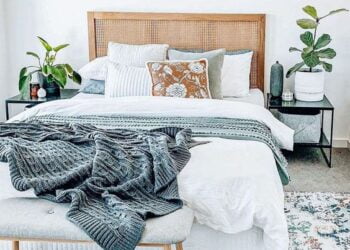Renovating is a smart move for home sellers keen to achieve the best selling price. A well-planned and executed renovation can boost property value and help attract more potential buyers, resulting in a meaningful difference to your bank balance.
However, if you’re renovating for the first time, how do you know where to invest the dollars and where to save, so that you get the best bang for your buck?
Erica Fanning, Interior Designer from Erica Fanning Interiors reveals her top tips on how home sellers can achieve the best return on their renovation spend.
 Image via McGrath
Image via McGrath
WHERE TO INVEST
Kerb Appeal
Any prospective buyer will see the exteriors of a home first before they see the interiors. As a result, it’s important to establish kerb appeal, so you can wow visitors from the onset. If you have a large driveway or lawn space in front of your house, invest in some landscaping work such as rendering the outside walls and touching up the front door with a fresh coat of paint.
High-Traffic Rooms
Focus your renovation efforts on high-traffic rooms like the kitchen and bathroom. Upgrades to these spaces will get you the highest return on investment and will appeal to potential buyers. For the kitchen, laminate benchtops are a popular and affordable choice, as they are durable and come in a wide variety of colours. With bathrooms, ensure you fix any plumbing leaks and replace old or broken fixtures like dripping taps. Cracked tiles should also be fixed where required.
Good Quality Flooring
If the flooring in your house is not up to scratch, it can be a deal breaker immediately. Assess your house and consider upgrading your floor covering with more modern options that will garner mass appeal. If your carpets are looking a little worn, strip it out and replace it. Timber flooring is always a safe and classic option that won’t date.
Professional Help
Resist the urge to skimp on hiring professionals for heavy duty tasks and handyman jobs. While it’s important to be cost effective when renovating to sell, it’s equally vital that you don’t cut corners where it matters. For jobs like structural work, plumbing and electrical, always leave it to the professionals. Botched DIY efforts can end up costing you more in the long run.
WHERE TO SAVE
Structural Changes
Where possible, avoid making any structural changes to your property as that’s when the dollars start to add up. For example, if you want to knock out a wall, check to see if it’s a load-bearing one first, because if it is, it might not be worth the trouble. Similarly, when renovating bathrooms, see if you can make updates without moving the plumbing.
Painting
Freshening up the paint in a room can dramatically transform a space and is a cost-effective change that will garner maximum return. Look for painters on community marketplaces like Airtasker and you can easily find someone that will do the job effectively without breaking the bank. Upload a photo of your room to Bunning’s Paint Colour Planner to preview paint colours before you commit – a great way to test trial colour schemes virtually. Avoid buying cheap quality paint and opt for neutral palettes so it won’t date.
Nice-to-Have Upgrades
Investing your money upgrading low-traffic rooms or nice-to-have elements like the swimming pool, hot tub or a walk-in wardrobe isn’t always going to get you the highest ROI because these spaces are considered non-essentials and won’t necessarily appeal to every buyer. It’s great to keep these nice-to-haves in top shape, but you may spend far more money than you will get back in return.
High-Tech Gadgets
Resist the urge to splash out on a new state-of-the-art sound system, lighting control devices or any other fancy electronics/gadgets. Again, these are not essentials and often, potential buyers have their own preferences on what to include and exclude.



















